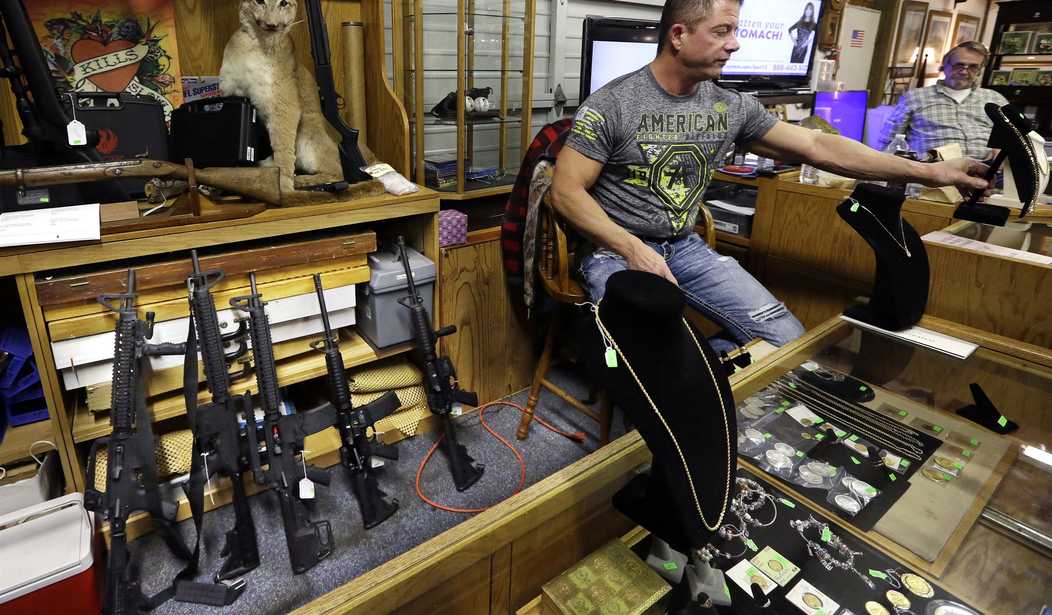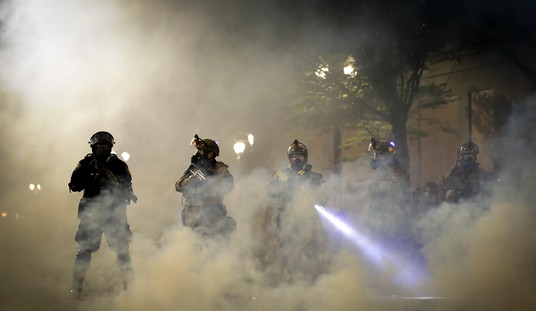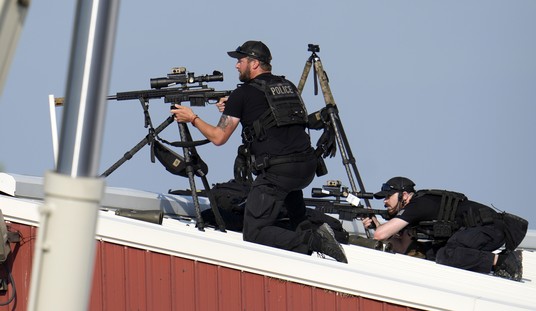Much has been written in the last couple of days regarding United States District Court Judge Roger Benitez’s decision on Friday declaring California’s ban on “assault weapons” — as defined in the statute — to be an unconstitutional limit on the right of California citizens “to keep and bear arms” under the Second Amendment.
But this was not Judge Benitez’s first foray into Second Amendment jurisprudence that produced a favorable outcome for advocates of Second Amendment rights. Back in August 2020, the Ninth Circuit upheld a lower court decision that similarly found as unconstitutional a related California statute — one banning the ownership of “large-capacity magazines.” The author of that lower court decision was Judge Roger Benitez.
In between those two decisions, there was an “en banc” decision from the Ninth Circuit on a different subject of constitutional disagreement over the meaning of the Second Amendment. In Young v. Hawaii, the Ninth Circuit upheld Hawaii’s “open carry” firearm regulations, which require applicants applying for an “open carry” license to show either an “exceptional case or demonstrated urgency” to carry a firearm. The plaintiff, George Young, twice applied for an “open carry” license, but his applications were denied based on his failure to meet the “exceptional case or demonstrated urgency” requirements.
These three decisions, along with dissenting views of judges in the two Ninth Circuit decisions, total 390 pages of written text. This article is not the place for readers to look for an in-depth analysis of the legal arguments presented. But there are some interesting aspects of Judge Benitez’s opinion on Friday that are worth noting because he takes some time to explain where Second Amendment jurisprudence stands — 13 years after the Supreme Court changed everything with its decision in the District of Columbia v. Heller.
As Judge Benitez wrote, there was Second Amendment law pre-Heller, and there is Second Amendment law post-Heller, and only the latter seems important to Judge Benitez — unlike the majority view in the en banc decision in Young v. Hawaii.
You can add to the mix here that the Supreme Court finally accepted a Second Amendment case for the next term, which will likely address the issues raised in Young v. Hawaii. In New York State Rifle and Pistol Association v. City of New York, the Supreme Court is expected to tackle the question of what level of scrutiny is to be applied to restrictions placed by state and local governments on the right to keep and possess firearms as guaranteed by the Second Amendment.
Generally speaking, gun owners in New York City may possess a gun within their home only under a “premises license,” and the gun must be kept unloaded and in a locked container. Also, gun owners may not transport the guns except directly to and from one of the city’s seven shooting ranges. This restriction prohibits the transport of guns to locations outside the city limits, even to an external shooting range or to a second residence owned by the gun owner.
I wrote about the Supreme Court’s decision to take up the New York State Rifle & Pistol Association case in this earlier story. If the Supreme Court determines that state and local regulations of the right to keep and possess firearms are subject to “strict scrutiny” analysis — which will likely be the position of the more conservative members of the Court (and the issue on which Chief Justice Roberts was likely non-committal), then the kinds of restrictions such as those in Hawaii and New York City will likely be found to be unconstitutional.
The Ninth Circuit is not nearly as liberal as it has been historically, because President Trump was able to name an incredible 10 judges to the Court during his four years in office — out of 29, full-time judges now serving on the Court.
There are also three George W. Bush appointees on the Court and one or two Clinton appointees who are sometimes more moderate than the balance of the Democrat appointees who are avowed liberals. It is no longer a certainty that Ninth Circuit decisions will turn out to favor liberal positions on issues like the Second Amendment.
Here are some passages from Judge Benitez’s opinion that should bring smiles to the faces of Second Amendment advocates.
The Second Amendment “elevates above all other interests the right of lawabiding, responsible citizens to use arms in defense of hearth and home.” Heller, 554 U.S., at 635. The Supreme Court clearly holds that the Second Amendment protects guns commonly owned by law-abiding citizens for lawful purposes.
This case is not about extraordinary weapons lying at the outer limits of Second Amendment protection. The banned “assault weapons” are not bazookas, howitzers, or machineguns… Instead, the firearms deemed “assault weapons” are fairly ordinary, popular, modern rifles. This is an average case about average guns used in average ways for average purposes.
Prior to 2008 [Heller], lower court opinions did not acknowledge that the Second Amendment conferred an individual right to own firearms, or that the right applied against the states. See e.g., United States v. Hancock, 231 F.3d 557, 565–66 (9th Cir. 2000) (“[T]his court has concluded that ‘the Second Amendment is a right held by the states, and does not protect the possession of a weapon by a private citizen.’”)
Judicial recognition of an individual right to keep and bear arms to be respected by the states would come later with the Heller decision in 2008 and the McDonald decision in
2010.
Heller involved a “federal” law, in that it was gun ownership prohibition in the District of Columbia. McDonald extended Heller to state and local regulations by holding that rights under the Second Amendment were applicable to state law under the 14th Amendment.
As an aside, the “assault weapon” epithet is a bit of a misnomer. These prohibited guns, like all guns, are dangerous weapons. However, these prohibited guns, like all guns, can be used for ill or for good. They could just as well be called “home defense rifles” or “anti-crime guns.” The mechanical design features that identify a rifle as a California “assault weapon,” it is argued, tend to help a person shoot the rifle more accurately under pressure. The Plaintiffs make the point that this is a better condition for all lawful uses, i.e., a more accurate gun is better for everyone. After all, responsible gun-owners worry about the ending point of every round fired. If shooting in self-defense, a home defender wants every round to hit only attackers.
In the terrible mass shooting context, which fortunately is a rare event, reducing the number of innocent victims is the State’s goal, although it is not at all clear that a less accurate rifle would reduce the number of victims. A less accurate rifle in the hands of a mass shooter may very well result in different victims, but not necessarily less victims. On the other hand, in the self-defense context, which seems to be more common, taking accurate shots at attackers is vitally important for the innocent victim. While the state ought to protect its residents against victimization by a mass shooter, it ought also to protect its residents against victimization by home-invading criminals.
“The [Heller] Court determined that the right to keep and bear arms is an individual right held by the people, and not limited by the prefatory clause – ‘a well regulated Militia’ — only to ‘the right to possess and carry a firearm in connection with militia service.’” Young v. State, 992 F.3d 765, 782 (9th Cir. 2021) (en banc).
The Heller test is a test that any citizen can understand. Heller asks whether a law bans a firearm that is commonly owned by law-abiding citizens for lawful purposes. It is
a hardware test. Heller draws a distinction between firearms commonly owned for lawful purposes and unusual arms adapted to unlawful uses as well as arms solely useful
for military purposes.The overwhelming majority of citizens who own and keep the popular AR-15 rifle and its many variants do so for lawful purposes, including selfdefense at home. Under Heller, that is all that is needed. Using the easy to understand Heller test, it is obvious that the California assault weapon ban is unconstitutional.
The modern rifle ban strikes at the acknowledged core of the Second Amendment, which is the right of self-defense in the home. Heller held that the “core” Second Amendment right is for law-abiding citizens to defend hearth and home.
Going straight to the core, the California law criminalizes modern rifles kept or possessed everywhere, including in the home for self-defense…. A Californian who picks up an unregistered AR-15 style modern rifle solely to defend his family in his home commits a crime.
When a severe restriction on the core right of self-defense amounts to a destruction of the Second Amendment right, it is unconstitutional under any level of scrutiny. “‘A law that imposes such a severe restriction on the fundamental right of self-defense of the home that it amounts to a destruction of the Second Amendment right is unconstitutional under any level of scrutiny.’”
That last paragraph is the outcome that Second Amendment advocates are looking for in the New York State Rifle & Pistol case. A lack of confidence in Chief Justice Roberts on the question of what level of scrutiny should be applied to questions involving “time, place, and manner” questions with regard to the right to carry has likely been behind the reluctance of the other four conservatives to take Second Amendment case of consequence.
But the addition of Justice Barrett to the Court may now provide that key fifth vote on “strict scrutiny” as the appropriate standard of review on state and local regulations on “right to carry,” and eliminate the “back-door” limits on Second Amendment rights that have been imposed through such regulations.
I’ve only scratched the surface of Judge Benitez’s opinion. I’ll reserve further analysis until the case makes its way to the Ninth Circuit.














Join the conversation as a VIP Member